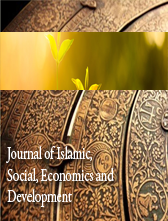ASSESSING THE MALAYSIA’S HIGHER EDUCATION FUNDING MODEL: SCANDINAVIAN VERSUS THE ANGLO- AMERICAN APPROACH
Abstract
Around the world, funding for higher education has always been and continues to dominate the issues relating higher education. In Malaysia, despite huge subsidies allocated for higher education, there is an argument that fees should be abolished and higher education should be provided for ‘free’, out of tax-payers money as to ensure the widening access among population. Prompted by this argument, the paper attempts to analyse in terms of where does Malaysia stand based on two different approaches observed in higher education financing i.e. the Scandinavian and Anglo-American approaches. As a matter of fact, the Scandinavian approach stresses more on social welfare, strong government intervention and higher taxes while the Anglo-American promotes free market economy with flexible labour force and low government interference. Following Docampo (2007), we apply the plotting technique (scatter plot in SPSS 14) by using seven variables which includes public spending on education (I1), public spending on higher education (I2), private spending on higher education (I3), total spending on higher education (I4), taxes on average worker (I5), gross enrolment ratio (I6) and gross domestic expenditure on R&D (I7) to show the consistency between indicators that manifest clustering of Scandinavian and Anglo-American approach among countries. An indication that can be obtained is Malaysia does implement the hybrid approach (public- private spending on its higher education) of the two models, but when looking on its excessive higher education public spending, it is clarified that they were leaning more towards Scandinavian Approach. Based on the analysis, both public and private spending on higher education illustrates the existence of significance influence towards the gross enrolment ratio. However, Anglo-American countries that are high with their private spending on higher education (I3) have better enrolments as compared to the Scandinavian countries with high public spending (I2). Further investigation is carried out to see the significant impact of these policy variables on enrolments. The OLS regression shows that the private spending (I3) has better coefficients as compared to the public spending (I2) in enhancing access, lending support towards worldwide reform of cost-recovery in higher education. For Malaysia, where higher education involves a considerable amount of public resources, combining with a low tax regime, policy of enhancing enrolment in higher education through increasing public spending may pose a burden to the government, not to mention considering ‘free education’ for all and abolishing higher education fees. While the finding signifies the importance of private spending in enhancing access, a careful consideration should also be placed on tackling the issue of equity.













